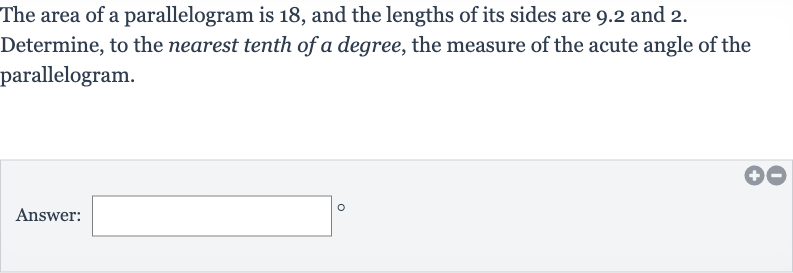AI tutor
Welcome to Bytelearn!
Let’s check out your problem:

The area of a parallelogram is , and the lengths of its sides are . and . Determine, to the nearest tenth of a degree, the measure of the acute angle of the parallelogram.Answer:
Full solution
Q. The area of a parallelogram is , and the lengths of its sides are . and . Determine, to the nearest tenth of a degree, the measure of the acute angle of the parallelogram.Answer:
- Area Formula: The area of a parallelogram is given by the formula , where is the area, is the base, and is the height. The height is the perpendicular distance from the base to the opposite side, which can be expressed as when the area and base are known.
- Calculate Height: We know the area and one side length . We can calculate the height using the formula . (approximately)
- Calculate Angle: The height we have found is the side length multiplied by the sine of the acute angle, since . We can rearrange this to find the angle : .
- Final Angle Calculation: We substitute the values we have into the formula to find . (approximately, to the nearest tenth of a degree)
More problems from Find the magnitude of a three-dimensional vector
QuestionGet tutor help
QuestionGet tutor help
QuestionGet tutor help
QuestionGet tutor help
QuestionGet tutor help
QuestionGet tutor help
